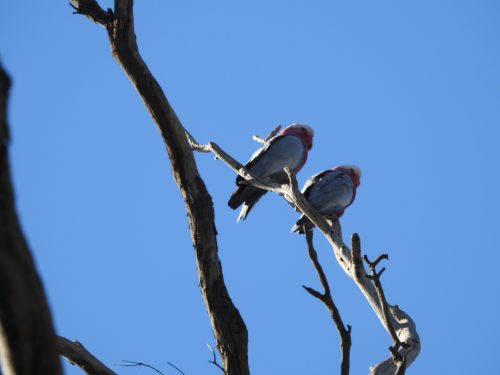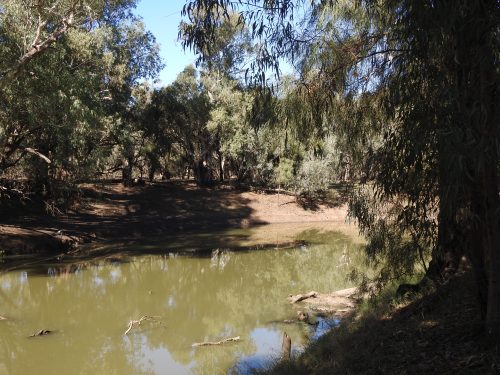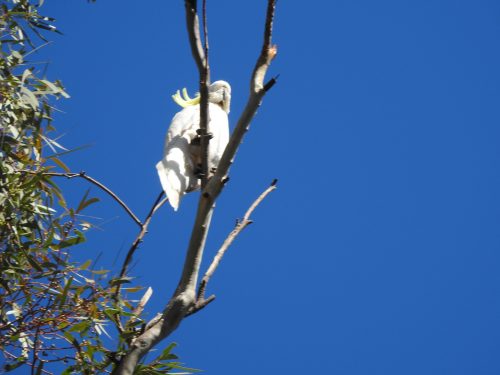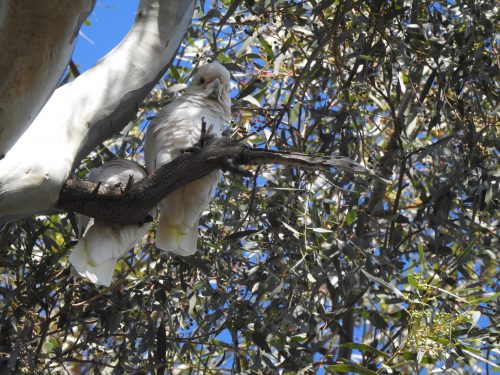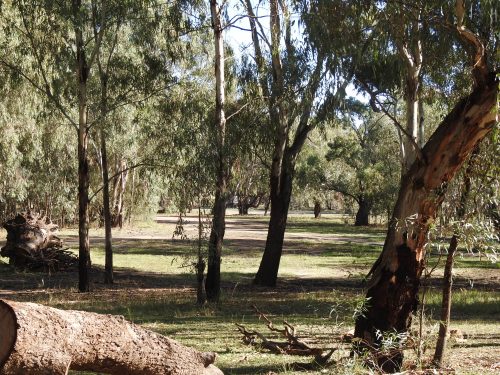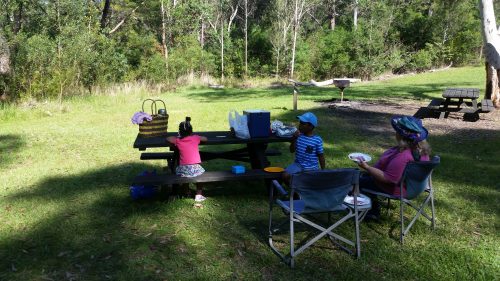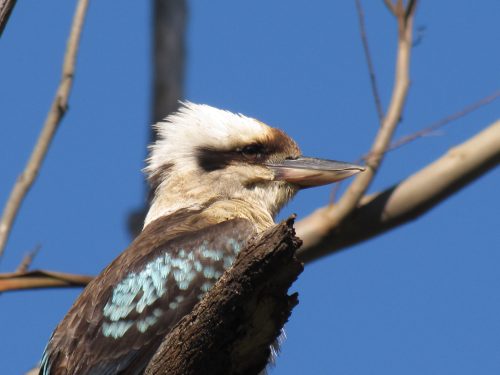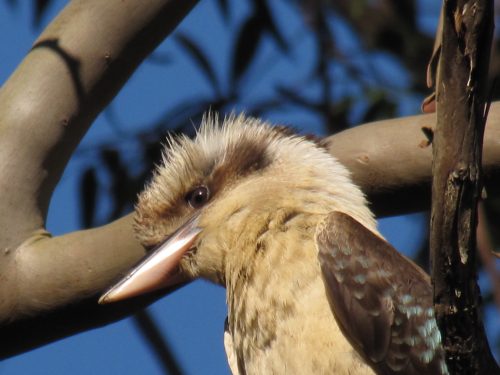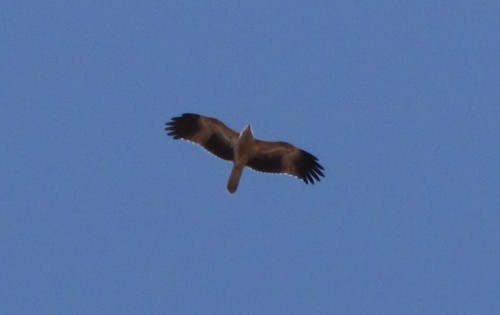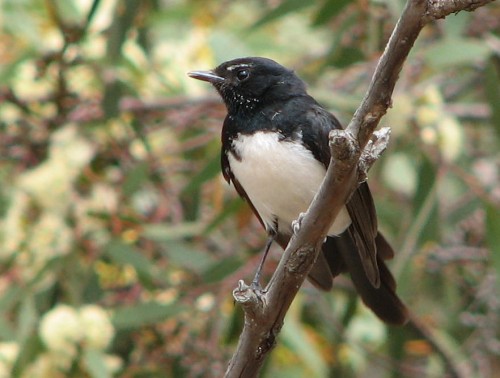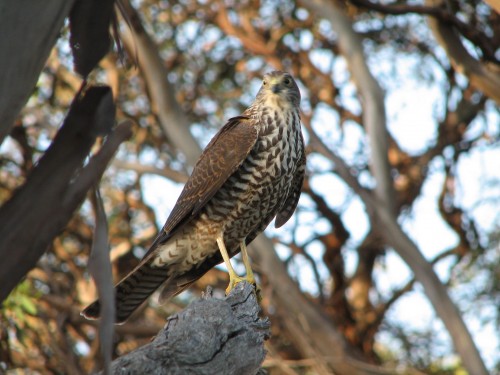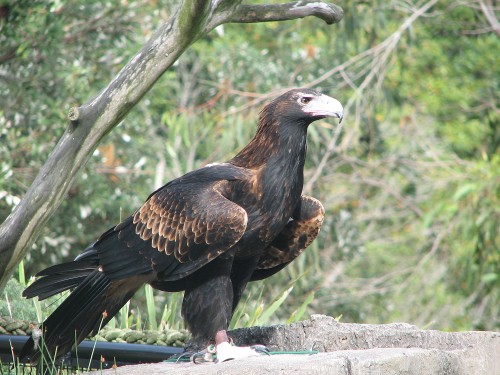Birding at Euabalong
Last month I drove from home in Murray Bridge to my son’s home in Sydney. At just over 1300 kilometres, it is a drive which can be easily done in two days. In more recent trips over there, I have chosen a variety of routes in order to see more of this wonderful land in which we live. On my most recent trip, I took four days to get there, planning to do some birding along the way.
I stayed for two nights in a cabin in the lovely Lake Cargelligo Caravan Park. This town is situated in the mid-west of New South Wales. It is, in fact, almost mid-way from anywhere in the state. The town caters for most needs of travellers but the area has suffered during the recent years of drought. By way of contrast, the area around Lake Cargelligo had received good falls of rain in the few weeks leading up to my visit. Water was lying everywhere, particularly on the sides of all roads. I hope that this good rain will help the farmers recover from their recent drought.
On the day after my arrival, I had planned to do a whole day of birding in the area. My first stop was at the small community of Euabalong which is about a half-hour drive north. The Lachlan River flows through town (see photo below) and it was certainly worth a stop to observe the local bird population.
I found a dirt track leading to the banks of the river and stopped for a while to make a list of the birds I could see and hear. The local Sulphur-crested Cockatoos (photo below) were making a terrible racket. They were screeching loudly and flying around erratically. I then spotted the cause of the upset. A Little Eagle and a Wedge-tailed Eagle were swooping low over the eucalypt trees where the cockatoos had been perched. They must have been looking for a mid-morning snack. I only saw the two eagles momentarily before they glided out of view. There was no opportunity to get a photo or two. Some Little Corellas (photo below) and Galahs (photo above) were also a part of the ruckus.
After leaving the picnic area next to the Lachlan River, I drove slowly around the small town (population less than 200) to add to my list of birds seen or heard. I could easily have added to this list by stopping elsewhere in the town, but other places were calling me to keep going.
Here is a list of birds I listed:
- Australian Raven (several)
- Crested Pigeon (2)
- Magpie-lark (2)
- Red-rumped Parrot (4)
- Galah (about 30)
- Sulphur-crested Cockatoo (100+)
- Little Eagle (1)
- Wedge-tailed Eagle (1)
- Black-backed Magpie (2)
- Peaceful Dove (1 heard)
- Apostlebird (5)
- House Sparrow (30)
- Welcome Swallow (2)
- Pied Butcherbird (1)
- Little Corella (2 photographed but there would have been more in the flying flock)
My next stop was Euabalong West, just several kilometres to the west. There I added the following species:
- Superb Parrot (1)
- White-winged Choughs (15)
- Noisy Miner (5)
- Spiny-cheeked Honeyeater (1)
- White=plumed Honeyeater (5)
Happy birding,
Trevor
That’s not what I expected
Yesterday, my wife and I took our two grandchildren, ages 8 and 5, on a picnic. We are currently staying with them here in Sydney during the school holidays. They are very energetic children and they needed to run off a little steam, so we took a picnic lunch, some balls, my binoculars, my grandson’s binoculars(he is starting to develop an interest in birds), our folding chairs, my camera and a thermos for a cuppa. And some treats from our favourite local bakery.
Lane Cove National Park
We drove the short 10-minute journey to this wonderful national park, just a short distance west of Chatswood. We set up for our picnic and enjoyed some barbecued sausages and the treats from the bakery. It was a clear day with the temperature in the mid-20s – perfect for a picnic. After lunch, we involved the children in a few games. These included searching for various natural objects such as finding three different kinds of leaves. They were quite entertained, especially when I suggested some running races. They are both excelling at Little Athletics so they enjoyed making up a short course and getting me to time their efforts while I had my cuppa. Too easy.
Slow birding
Meanwhile, the birding side of things was rather slow. Sure, the obligatory Laughing Kookaburras were perched nearby, just waiting for an opportunity to sweep down and snatch our food (see photos below). Small flocks of Rainbow Lorikeets streaked overhead, or squabbled noisily in nearby flowering gum trees (eucalypts). We heard the occasional Pied Currawong calling, along with several Australian Ravens. Two Australian Black-backed Magpies were quietly feeding on the grassed area opposite us, and I heard a number of Yellow-faced Honeyeaters in the nearby trees, though I did not get a good look at them. All very quiet and peaceful – just right for a relaxing afternoon.
An unexpected bird
Just as I was finishing my cuppa, a small flock of Noisy Miners (a native honeyeater species) started calling very noisily near the top of a nearby tree. I stood up and moved closer, training my binoculars on the spot where a hawk-like bird had landed. It was being severely harassed by the miners. I raised my binoculars and immediately identified it as a Pacific Baza. I had a good view for several seconds, long enough to identify it and to take a few photos before it flew off.
Photos
Alas.
My camera was twenty metres away on the picnic table next to where I had been sitting – so no photos.
Botheration!
In my haste to see the bird, I had clean forgotten to pick up my camera. This is rather sad because I would have loved to have taken a photo of this species. This is only the second time I can recall seeing this bird; the other time was several decades ago in northern New South Wales, well before I started bird photography. I cannot be absolutely sure about this earlier sighting because all of my notebooks are at home, some 1400 km or two days’ drive away.
Pacific Baza
This species is found along the coastal regions of New South Wales, Queensland, Northern Territory and northern Western Australia. It is quite common locally but on this occasion, I only saw the one individual. This is about the southernmost extension of its range, and they are rarely sighted south of Sydney.
They are one of Australia’s easiest hawk species to identify, with a small crest and bright stripes across their chest. You can see several photos here, as well as more information about the species.
Meanwhile, here are two photos of the Laughing Kookaburras which sat watching our food in the hope of snatching something.
Good birding,
Trevor
Whistling Kite overhead at Pangarinda
Last week I wrote about the Tree Martins I saw and photographed at the Pangarinda Botanic Gardens near Wellington in South Australia. We were having an afternoon relaxing in the gardens to celebrate my wife’s birthday. You can read about the Tree Martins here.
While we were having a cuppa and some birthday cake with our friends I was taking note of all the birds I saw and heard. It was a lovely sunny day with a cooling breeze making the afternoon very pleasant indeed.
During the afternoon we saw and heard many birds, including plenty of New Holland Honeyeaters, both Red and Little Wattlebirds, Rainbow Bee-eaters, White-browed Babblers and even several Brown Quail. Go to the reading list at the end of this post for a link to the article about the quail.
While we were sitting at the picnic table having our afternoon cuppa a Whistling Kite soared overhead a number of times. I managed to get one reasonable photo, the one shown above. I still have yet to master the art of taking photos of birds in flight. The other shots are either too blurry, or too far away to be useful.
Whistling Kites are quite common along the Murray River in South Australia. The botanic gardens at Wellington are barely 500 metres from the river and possibly even closer to some of the reed-covered banks nearby, so I was not surprised to see one overhead. In fact, this species is common throughout most of mainland Australia where suitable habitat exists. Their preferred habitat includes open woodlands usually near water, along creeks, rivers, lakes and swamps where there are suitable nesting and roosting trees. They occasionally can be seen in Tasmania too.
Further reading:
- Tree Martins all a twitter
- Calling up a Brown Quail
- Birds and plants of the Pangarinda Arboretum (this was the early name for these gardens).
A brave Willie Wagtail
A few days ago I wrote about our feisty Willie Wagtail (click here to read the article). I made some comments about some of the birds I had seen our resident Willie Wagtails chasing off from near their nest. They can get very protective of the nest, the eggs and especially the young once they hatch.
Yesterday I looked out of the window and saw it again attacking a much larger bird. Because of the distance – about 40 metres – I was not sure what it actually was, but it was ducking every few seconds as the Willie Wagtail attacked its head. Fortunately my binoculars were within reach but as I grabbed them the bird flew off to another part of the garden near the front of the house with the noisy Willie Wagtail snapping at its tail.
I went to the sun room and looked out at a bush nearby. The much larger Collared Sparrowhawk was cowering in bush, trying valiantly to escape from this angry little bird. I was able to get a good view of the hawk before it flew off again, hotly pursued by the Willie Wagtail until it was well away from the nest.
Their resilience and sheer bravery in the face of great odds always amazes me. Quite the inspirational little bird.
The photos on this post were taken some time ago. I should keep my camera handy too.
Further reading:
Tackling the big birds
Earlier this week we drove from our home in Murray Bridge to Sydney, a two day drive of over 1300km. It is a long and interesting drive. Our purpose is always to stay with our son and spend time with him and our two grandchildren.
Along the way we usually stop for morning tea, lunch and afternoon tea. I like to choose spots where I know I have a reasonable chance of seeing some birds. This does not always work; sometimes the weather conspires against good birding, like when the wind is blowing and I have trouble identifying the birds calling.
I also keep a sharp eye out as we are driving along, listing the birds I see. I should add that I only add to my list when my wife is driving, though even when I am behind the wheel I have been known to dictate lists to my wife – who obligingly scribes for me.
On this current trip I saw an interesting case of brave bird behaviour. As we neared the town of Narrandera a Wedge-tailed Eagle flew very low over our car. These are magnificent birds even when seen soaring high up in the sky, but at close quarters they are truly impressive. What made this sighting even more interesting were the two Australian magpies hotly pursuing the much larger eagle. There is obviously no love lost between these two species.
This is not an isolated or unique occurrence. I have seen smaller birds harassing much bigger species like the wedge-tail. I have even seen the comparatively small Willie Wagtail tacking a Wedge-tail Eagle. The eagle could easily swallow the wagtail in several gulps. It would be just a snack to the much larger bird.
